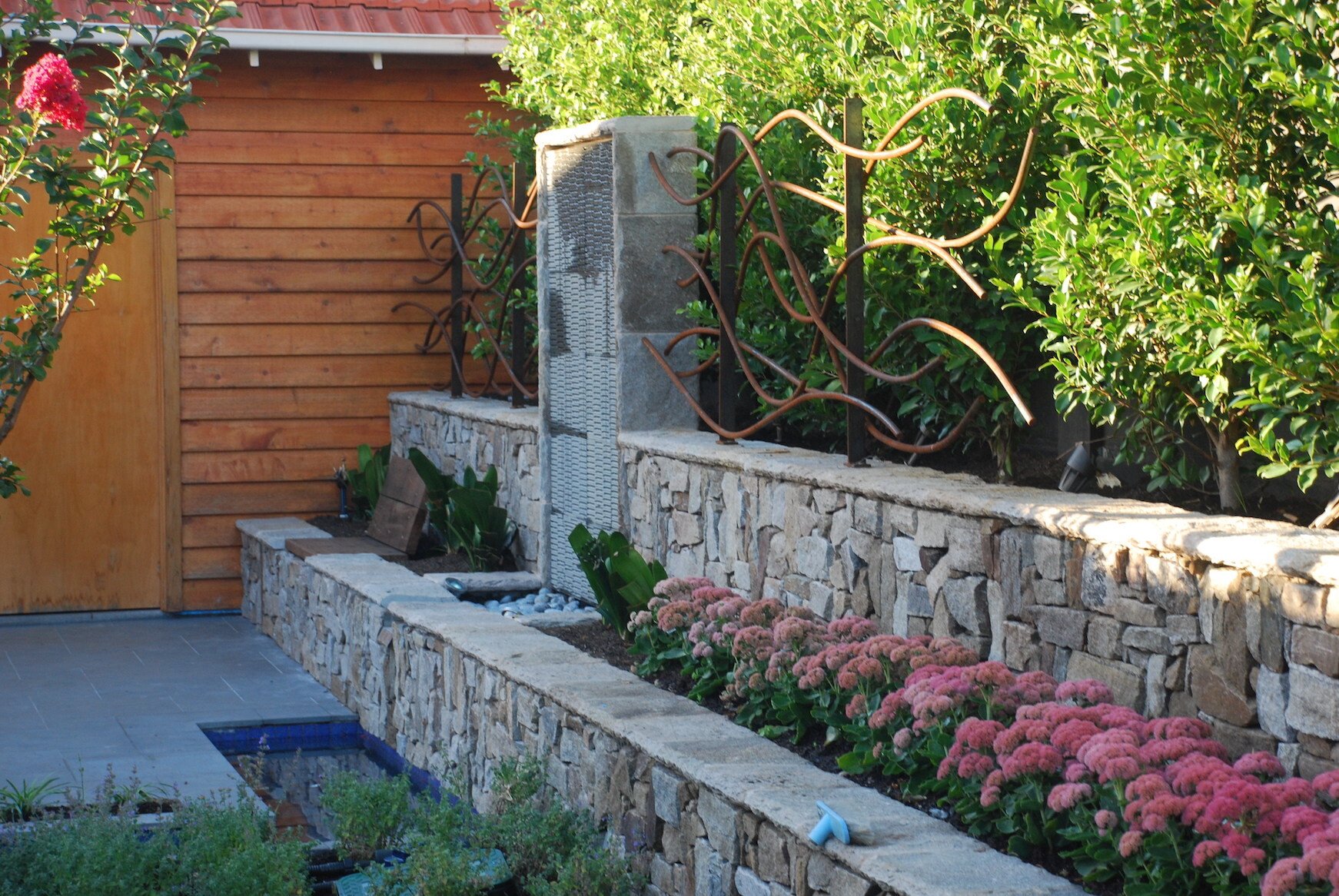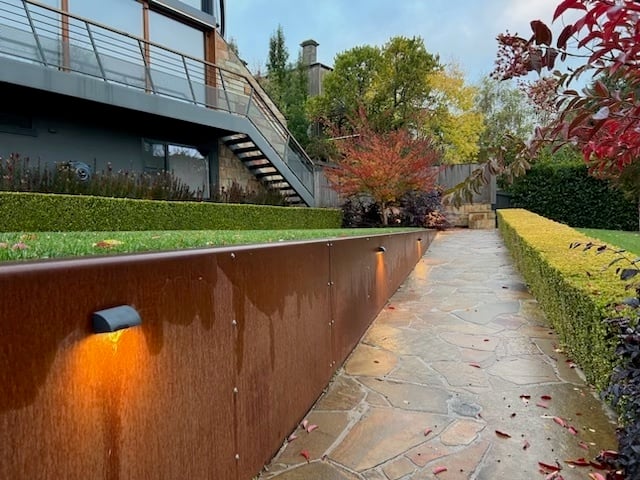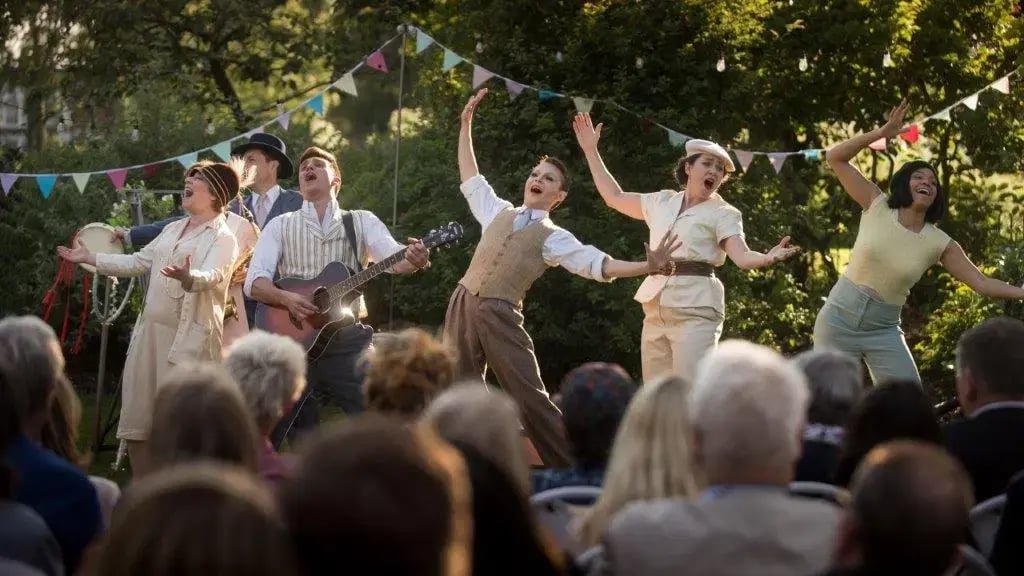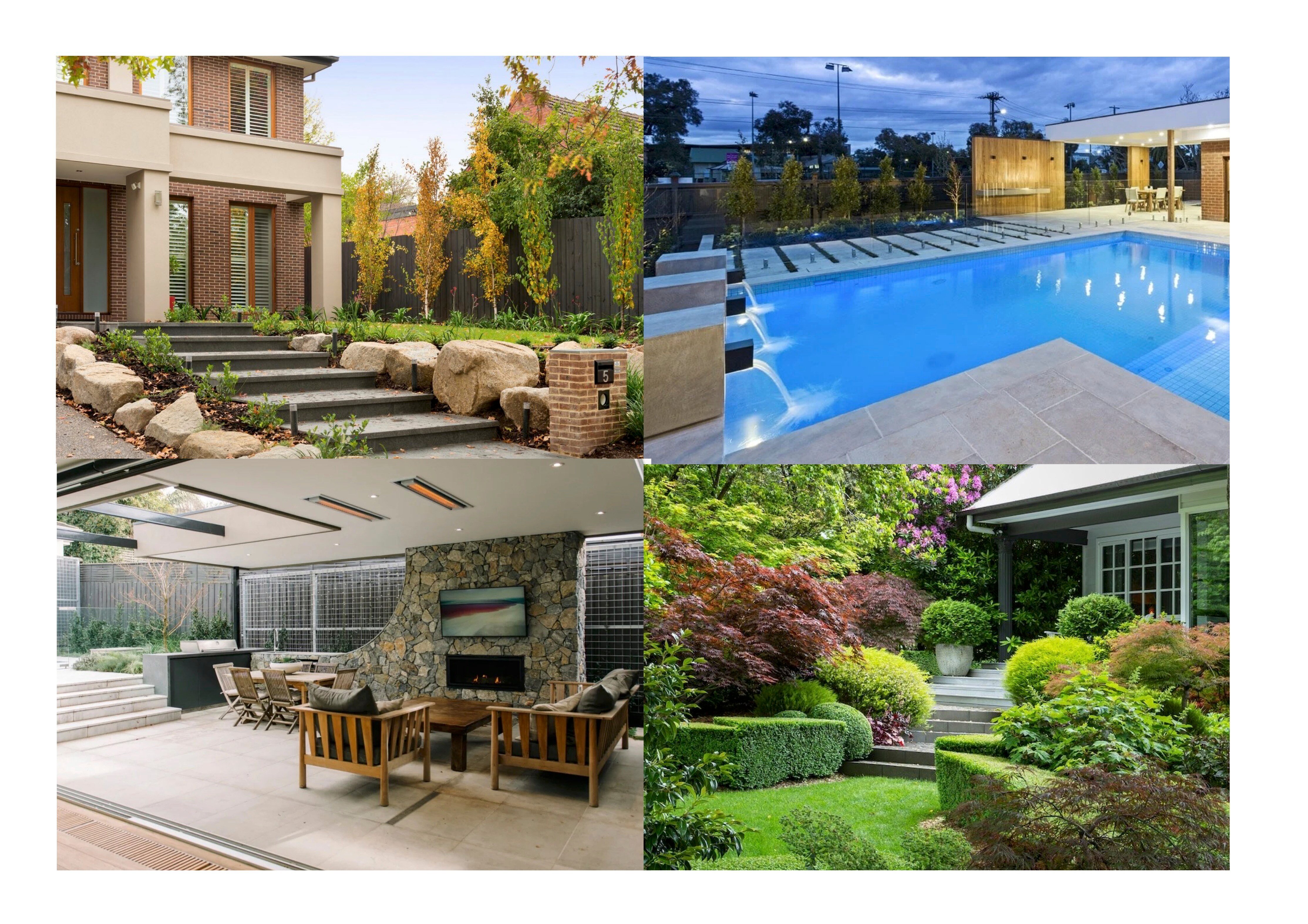
So you're thinking about creating a Designer Garden! Great! How will you bring this about?
Perhaps the best place to start is defining what is a 'Designer Garden'?
When you ask Google, this is the answer you get:

Clearly to create a Designer Garden entails engaging a Landscape Designer or Landscape Architect. But if you've never worked with one of these garden professionals before, what do you need to know before you engage them?
This article will give you some important insights into the 4 key aspects of working with designer. You should read it before embarking on any major garden project.
It is drawn from our over 35 years experience designing and creating hundreds of beautiful gardens for our clients. It will give you the fundamental knowledge you need to stay in control of your garden project from beginning to end.
Here are the 4 key steps to become familiar with when embarking on your journey to a wonderful new Designer Garden:
Understanding the design process
How to engage the right designer
Understanding your brief
A new garden almost always starts the same way. You start thinking about all the things you would like your new garden to have. Maybe a pool or an outdoor kitchen. Maybe a native garden for attracting birds. Maybe a space for entertaining large groups. These are the beginnings of your wish-list.
It's important to realise that the first you are in knowing what you want in your new garden, the better the design process will flow, once you start talking to a designer. You might be absolutely certain you need a new driveway because the old one is cracking and looks terrible. You might definitely want a pool, but not be certain yet whether fibreglass or concrete is the right choice, and need further information before you can decide.
This initial stage can sometimes feel confusing, particulary if you have lots of ideas swirling around in your head. To help with this, we always recommend you just pick one thing you are certain of and write it down. Then pick another thing. Work from what you are certain about first, before going off into the "don't know yet" and "not sures". Actually creating a written wish-list is the best place to start.
If you're not sure of what to include, here are some questions you can ask yourself to prompt the right answers:
- What style of garden do I want?
Cottage, Classic Formal, Native, Coastal, Contemporary, Mediterranean, etc. - Who is this garden intended for?
You only? You and your partner only? Your family? Your friends? Ultimately, how many people will use this garden and for what type of occasions? What garden features do you need to add to cater for these occasions? ie an outdoor kitchen, pool, decking, play areas, veggie garden beds, etc. - What do I like aesthetically?
Flowers, stone work, timber, water, geometric lines, curves, structures, lots of greenery, etc - What do I want to do in the garden?
Entertain, grow veggies, play with kids, host family gatherings, keep bees or chickens, etc. - What pragmatic aspects will I need to consider?
Will you need wheelchair access? Does the neighbour's tree cause issues of shade or leaf drop? Will a big new home be built next door in the coming years that you may need to plan to hide from, now!? - Do I need to consider privacy or family security?
This will help decide if you need a front fence and what type it might need to be. For privacy, you may need to consider what type of trees to plant to prevent your neighbours looking over the fence. - How will your garden needs change in years to come?
If you have kids under 3 now, perhaps in 3 years you might need a pool. Or if your kids are getting older, would installing a pool now mean it wouldn't get any use in 3 years time? - What have I seen in other gardens that I'd like to add to my own?
A Bocce court? An open pergola with wisteria growing over it? A pizza oven, hot tub or sauna? Some garden sculpture? Fruit trees? A firepit area? - And finally, what do I not like in a garden?
This is just as important as your likes. Excessive garden maintenance is the most common thing our clients tell us they don't want in their garden. Choosing composite decking over timber to again reduce maintenance is another one. Too many coloured flowers is a suprisingly common one, as is the colour pink!
As you ask yourself these questions, record your answers. You can always delete any of them later, but it's better to have them all recorded than forgotten.
And we recommend you be "free-flowing" in your ideas. Write down whatever comes to you without worrying about whether it will fit the space or your budget. Putting barriers to your thinking at the start just gets in the way of the flow. It's much better to just let it flow - "Let's add a hammock and wood stove, and an outdoor shower. Oh, and an in-ground trampoline and....." Have fun creating!
Understanding your budget
Budgets tend to be an evolving thing. Wherever you start, it is likely to change as the project evolves.
One starting point could be the old, 5-10% of the value of your home is the budget you should consider for your landscaping. There is some truth in this.
If you're building a new home worth $2 million, a budget of $200k for the landscaping is common. (At the time of writing this we are working on a $6 million new home and the landscaping is $500k.) So it can be a a reasonable place to start.
The next method of estimating a budget, is to list out every feature you want in your garden and assign an allocation to each to establish a budget range.
We've made this step easy for you. Our Free Online Landscaping Cost Estimator is a simple tool that takes a just a few minutes to complete. It will create a budget range for your project based on standard industry prices. This link will take you to it: Landscaping Cost Estimator
This tool will give you an estimated starting point for your budget.
Beyond this point, you will have a more accurate estimate calculated when you have the concept design presented. And then, at the Master Plan stage, a further refined costing will be calculated, which will either be the actual fixed quotation or may require a slight cost adjustment once engineering is done (if necessary).
For now, to prepare you to talk with a designer, the estimator tool will provide you and the designer a great starting point to discuss the budget.
Understanding the design process
Frustration most often arises when assumed expectations are not met.
Understanding the sequence of the design process and the importance of doing things in a certain order will help reduce any potential frustration and let you feel confident in letting things progress smoothly.
Here is your chance to walk through the various steps you will take with your designer so you understand what's happening at every stage.
Garden size: Once you engage your designer, the first thing they need to know is the size of the garden area they will be designing. If you're building a new house, they will tend to use your house plans for initial measurements. If they are designing a garden for an established house they will need to visit your site to take measurements. Although you are usually not required for this step you are most welcome to be there and walk around with the designer, pointing out anything they need to know or just asking questions. It's also a good opportunity for you and your designer to get to know each other better and ask a lot of questions.
Initial briefing: After your initial briefing meeting with your designer, they may wish to have a second meeting (or perhaps a zoom call). Generally this can be after they have started the initial design phase and some issues or questions may have cropped up they need answers to.
Second meeting: If they don't originate a second meeting, that doesn't mean you have to sit tight and keep quiet. Your help can be invaluable to the designer at this stage. Design is an evolving process, so if you suddenly have a thought about something to do with your garden that you forgot to mention in the initial brief, don't be afraid to pass it onto them. You won't be "bothering them". Your designer is there to guide you, and they will welcome your input. It can also be an opportunity to have a bit of a two-way chat about the project where your designer shares some thoughts and you share your own.
For example, you may suddenly realise you forgot to mention you've always wanted a worm farm in the garden. You might suggest to add it where you think it woud be best. But the designer may realise that area is in full sun and worm farms don't like that. So they suggest a shady area nearby and you agree. There, you have your worm farm.
Timeframes: It's a good idea to ask your designer what the expected timeframes are for you to see the various iterations of the garden concept design. Timings will vary depending on the complexity of the project (and how busy the designer is with other projects.) Usually the first iteration of your concept design will take the longest, because they have to incorporate everything you said you wanted while dealing with all the practical aspects of your site. Can they fit everything in and make it all work?
First iteration: Now it's important to realise the first iteration of your garden concept design will not be perfect. It may still be a little "conceptual" and possibly include some surprising elements the designer thought you might like.
But that's OK because this first iteration of the design is presented to you for you to modify. You can remove things you don't like, reshape elements or features that are there or even add things you now realise are missing.
Second iteration: The second iteration of your garden design should be much more to your liking and closer to the final approved design. It generally takes a lot less time to produce than the first iteration.
Third iteration: The third iteration is actually the creation of your Master Plan. This is where all the actual materials and plants to be included in your garden will be detailed. This can take as long as, if not longer than the original design, as there has to be a great deal of research done in order to select the most suitable materials from the best suppliers for your garden. Once again, some plant or materials selections might not be to your tastes so you can change the timber species for the deck or the stone for the wall if you like. Again the designer is happy to work with you to get the final details exactly to your liking.
At this point your designer may suggest you visit certain nurseries or material suppliers to help you find the exact thing you are looking for. They may even meet you there and walk you through the alternatives. No amount of imagery on screen can substitute for running your hands across a stone to feel the texture or getting up close to see the subtle grain running through a certain timber species.
Fourth iteration: After all these final details have been agreed you will be presented with the final version of your Master Plan - the fourth iteration of the design process. Any slight errors or adjustments can still be made at this stage, without extra costs. But this is not the time to suddenly remember you always wanted a hot tub in your garden. If you really do want one, the designer can generally accommodate you, but you will be invoiced for the additional hours. (Which is why we keep saying to add everything you can think of at the start!)
Once you have the Master Plan, what's next?
Your designer will provide a quotation to carry out the next phase of planning, which may include working drawings (dimensions and detailing for landscapers to build from), engineering, permits, etc.
It's worth noting that at Whyte Gardens, we always provide a landscaping cost estimate after both the initial Concept Design stage and the Final Master Plan stage. These help you keep an eye on cost throughout the design process. Because there is no point creating an amazing design that will never be built due to excessive costs.
your brief, budget, and understanding as laid out in this article.How to engage the right designer
There are very few articles online that tell you how to select and interview a landscape designer or landscape architect. Luckily this is one of them. It is such a vitally important step.
The most important thing to know is that there are basically 4 different types of "garden designers":
- Design-only. Some designers prefer to work alone and focus only on 'pure' garden design. They do not have any interest in the landscaping work to build the garden. They tend to part ways with you, once the they hand over the Master Plan to you, leaving you to basically work out the next steps on your own.
- Designer - plus preferred landscaper collaboration. These are designers who will suggest a separate landscaping company to do the work, and then charge you a fee to work with them to ensure the landscaping reflects exactly what they had designed.
- Specialist Designers. There are some landscape designers or landscape architects who have built a reputation by focussing only on one style of garden. ie Japanese gardens. Or possibly they have a passion for sustainability and only create Native gardens featuring all natural materials, etc These are the kind of designer to choose if they align with your passions, but again they may only design the garden and leave you to find the landscaper to build it.
- Design & Construction companies. This is where both the design and landscaping arms of the company are under the one roof. (Whyte Gardens falls into this category). Having a fully integrated service like this means you enjoy a completely seamless service from start to finish. You have one point of contact through the project and you will never feel like you've been left to handle any aspect of the work yourself. It's the smoothest and most stress-free experience for you.
Having decided which of these might be most suitable to your needs, there are a whole range of other issues within each of the 4 choices. So you have other issues you will need to evaluate.
Rather than go through them all here, we've actually answered all those questions in these two other articles, which we strongly recommend you take a few minutes to read: (You will find them very informative.)
What should I ask a landscape architect or designer before I engage them?
How to engage the right landscape designer or architect for you in Melbourne
summary
Bringing your dream for a designer garden to life is not an easy task. It's vital that you take control of those aspects of the project that will bring about the result you want.
The knowledge in this article is distilled from my long experience at discovering what works best. I really hope you've found it useful and that it will help you engage the right designer for your garden project.
As always, if you still have any unanswered questions, please feel free to reach out to me personally and I will be more than happy share my knowledge and experience with you. Just use the contact page to reach me. contact page
Thanks for reading!
Founder of Whyte Gardens
Topics:




